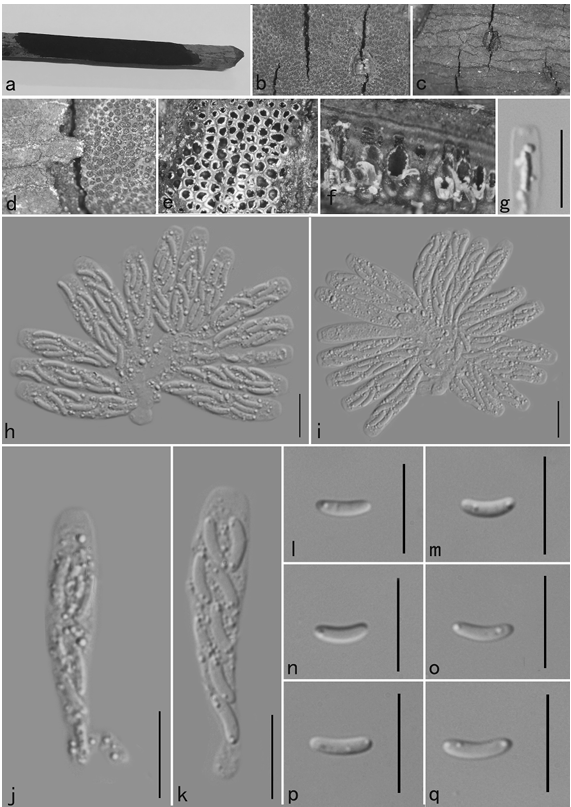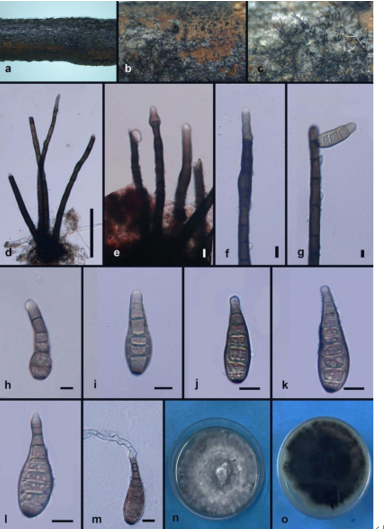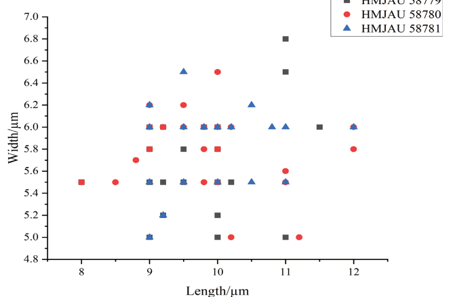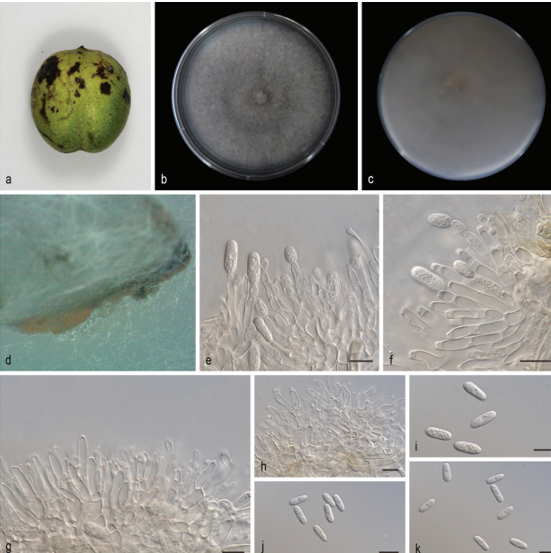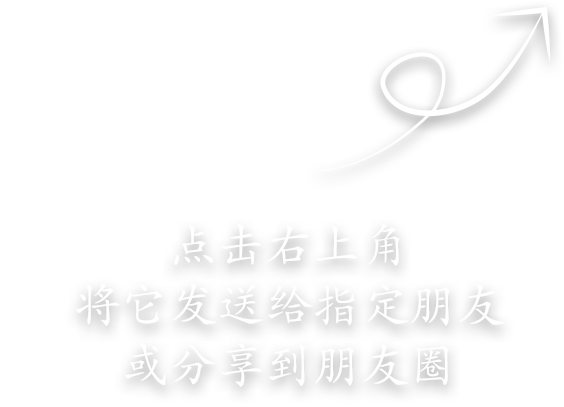Byssoloma melanodiscocarpum W. C. Wang & J. C. Wei 2020
Fungal Names No.: FN 570658
Holotype: China, Hainan Province, Wuzhishan City, Wuzhishan National Forest Park, 18°54′N, 109°41′E, 800 m alt., on leaves, 8 September 2017, W. C. Wang 139744 (HMAS-L—holotype).
Morphological description
Thallus epiphyllous, 1–2.5 cm in diam., smooth, continuous, green, K−, P−; margin irregular or sometimes dispersed into small patches, without hypothallus. Photobiont chlorococcoid with globose green cells, 7.5–15 μm diam.
Apothecia rounded, single or some clustered in groups, sessile, basally constricted, 0.25–0.75 mm diam., 180–200 μm high; disc plane, pure black, epruinose; margin white, byssoid but compact, hyphae not forming a rim over the surrounding thallus, prominent and persistent, thick, c. 50 μm wide, K−, P−. Excipulum and apothecial base well developed, without crystals, composed of abundant, colourless, loosely interwoven hyphae, mixed with granular substances which dissolve in K, K+ pale yellowish green, P−, excipulum 35–40 μm wide, apothecial base 70–80 μm high; hypothecium dark brown to dark reddish brown, 45–55 μm high, K+ olive-black (the red tinge disappears), P−; epithecium well developed, pale brown, turning colourless in K, P−; hymenium hyaline, mixed with pale brown pigment, K+ olive, P−, 60–65 μm high; paraphyses indistinct, branched and anastomosing. Asci clavate, 45–50 × 7.5–10 μm, 8-spored, ascus apex I+ dark blue, Byssoloma-type (Hafellner 1984); ascospores 3-septate, slightly constricted at the septa, some with a gelatinous perispore, ellipsoid, colourless, 12–15 × 3–4 μm. Pycnidia not seen.
Habitat: On leaves.
Distribution: In China.
GenBank Accession:
Notes: Byssoloma melanodiscocarpum is closely related to B. discordans var. flavescens described from Japan (Thor et al. 2000), which also has almost black apothecia with a white compact margin and 3-septate ascospores. However, in B. discordans var. flavescens, the thallus is pale green to blue-white, and the apothecia are dark brown to black-brown with a K− hypothecium and crystals in the excipulum. Byssoloma melanodiscocarpum is also close to B. confusum, which has similar apothecia with a white compact margin, but which differ in colour (pale brown) and have a K− brown hypothecium.
Reference: Wei-Cheng Wang1,2 ![]() , Pieter van den Boom3
, Pieter van den Boom3 ![]() , Ek Sangvichien4 et al.
, Ek Sangvichien4 et al.
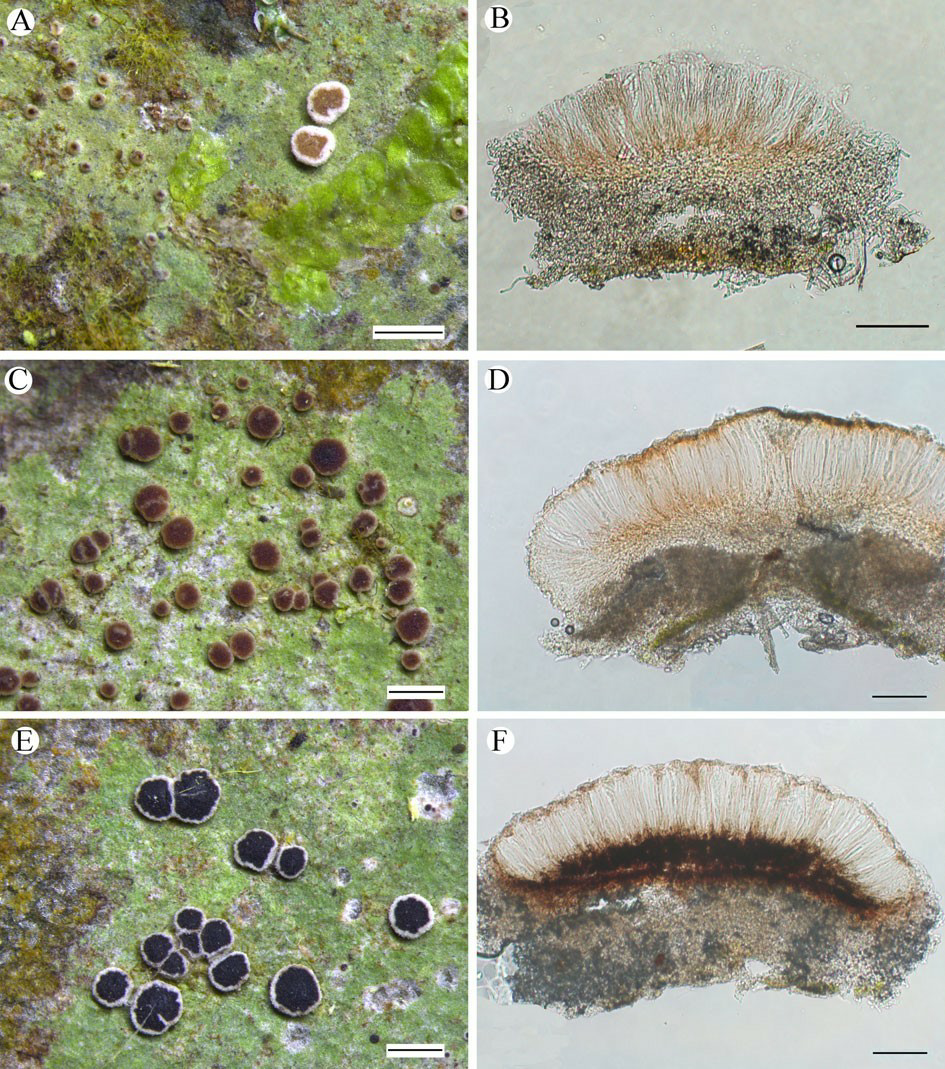
A & B, Byssoloma brunneodiscum (holotype, Wang 139422). C & D, B. rubrofuscum (holotype, Wang 144214). E & F, B. melanodiscocarpum (holotype, Wang 139744). A, C & E, thallus with apothecia. B, D & F, section through apothecium (in water). Scales: A, C & E = 200 μm; B, D & F = 50 μm.


